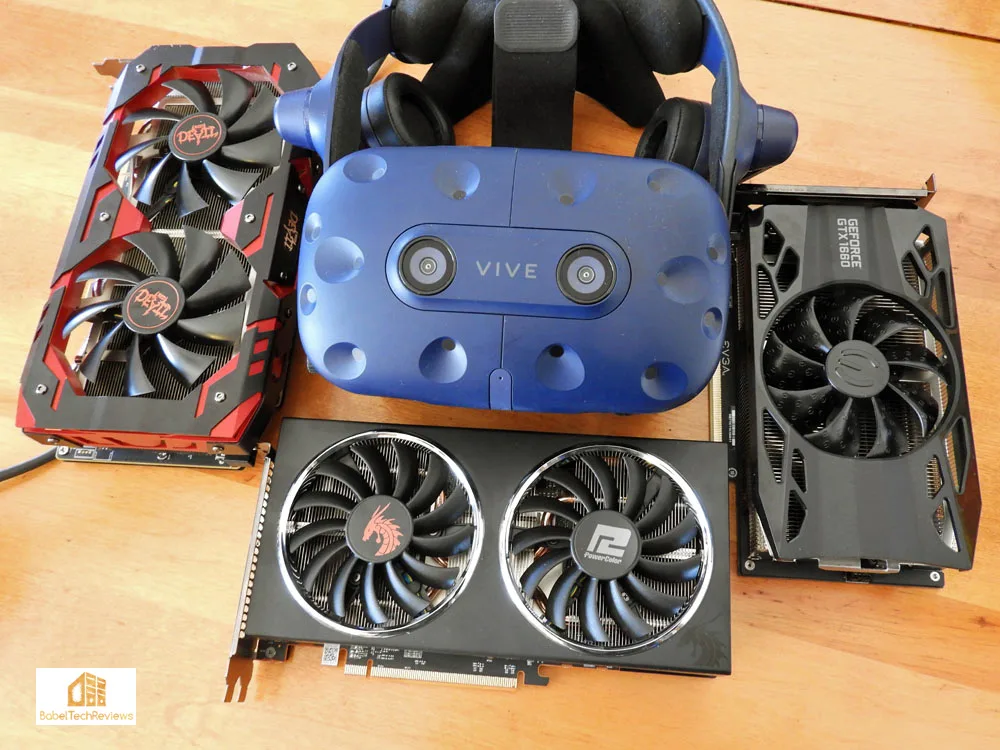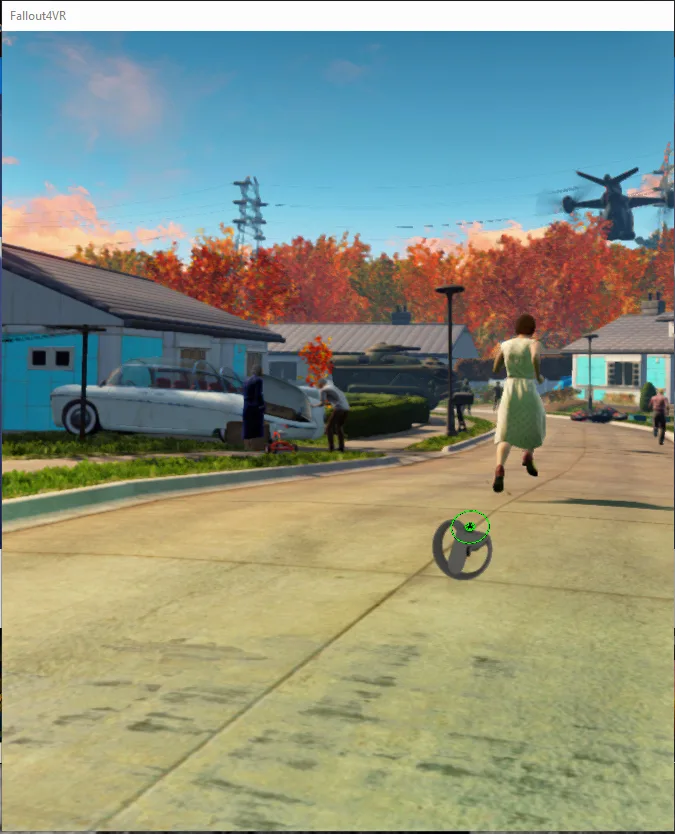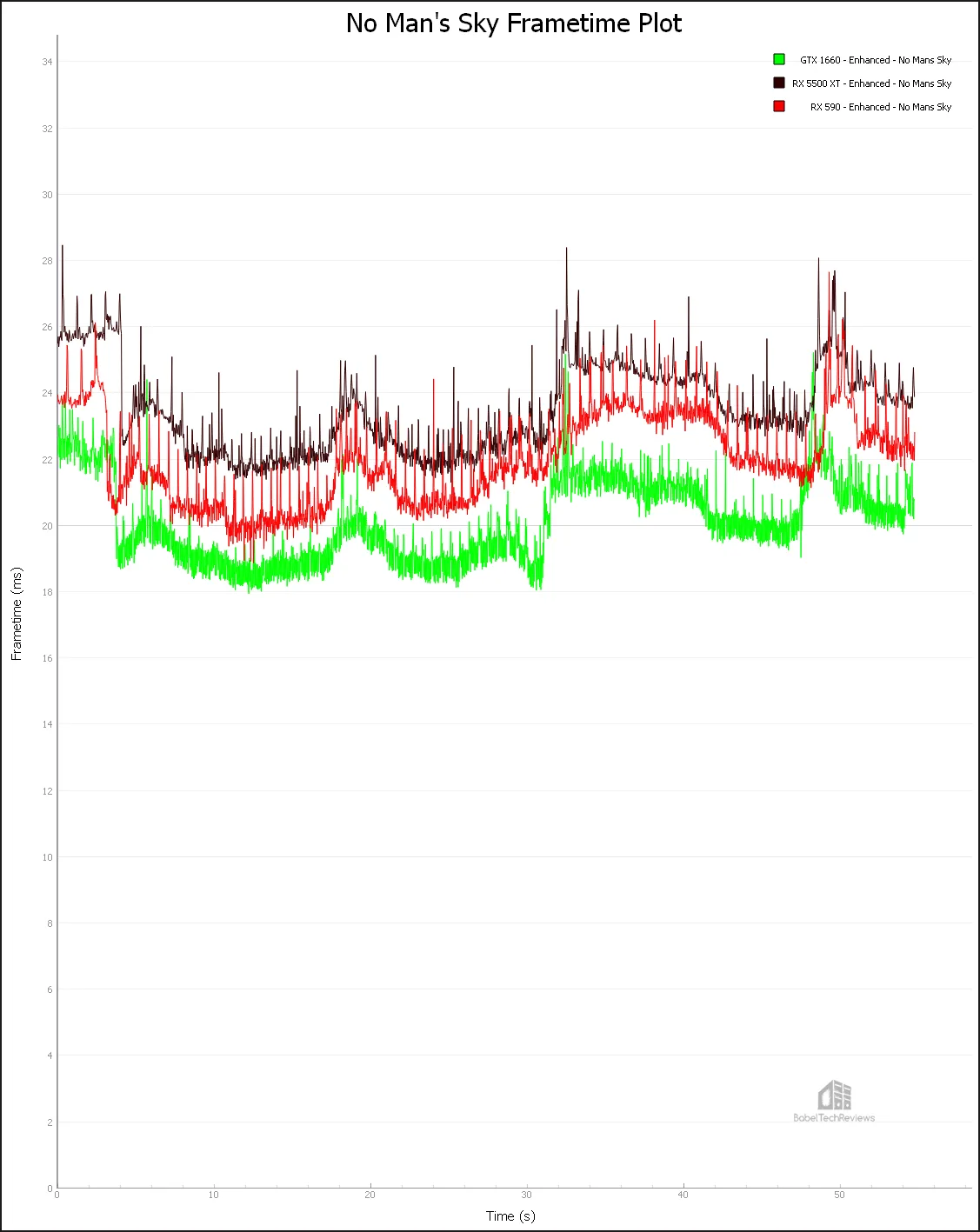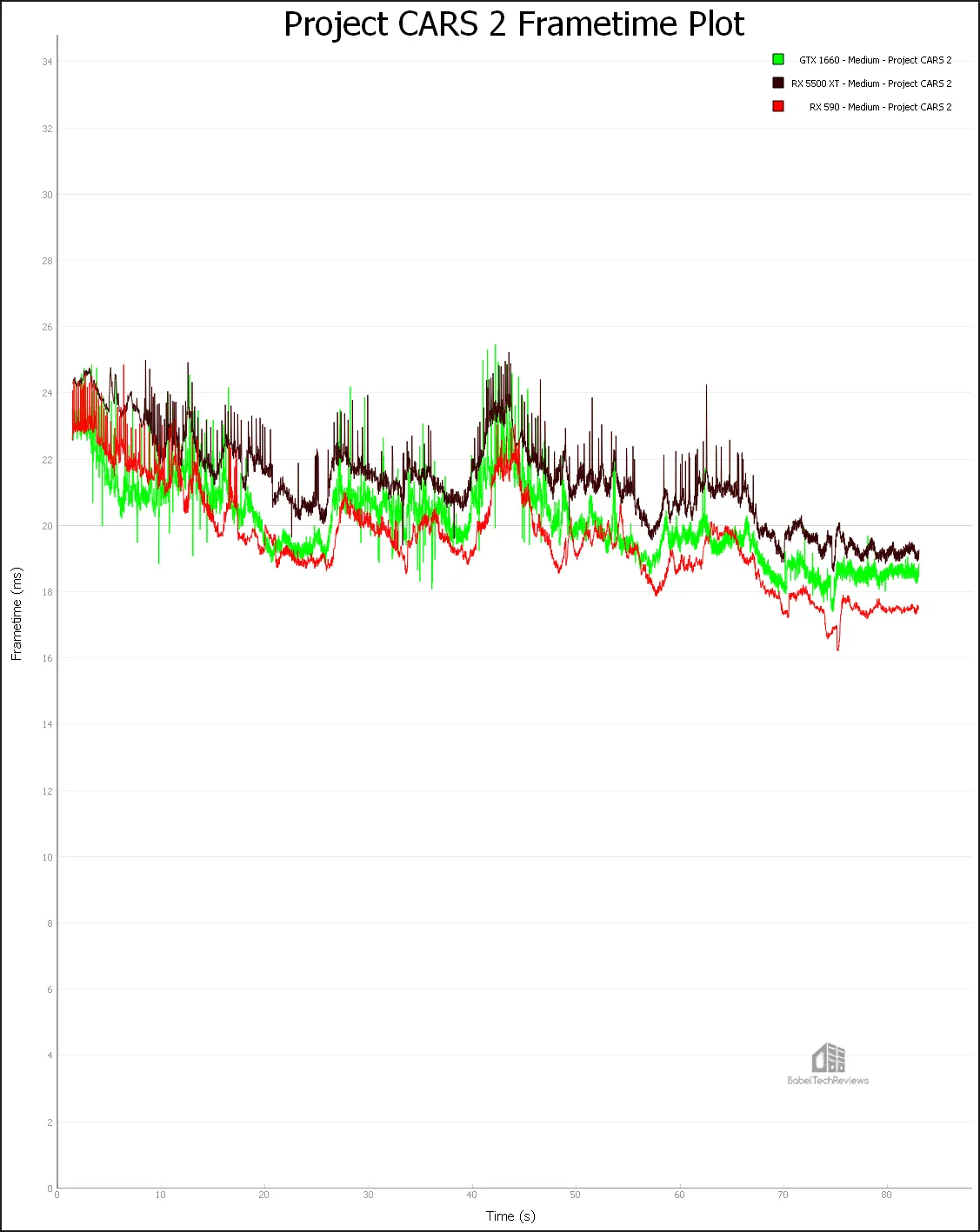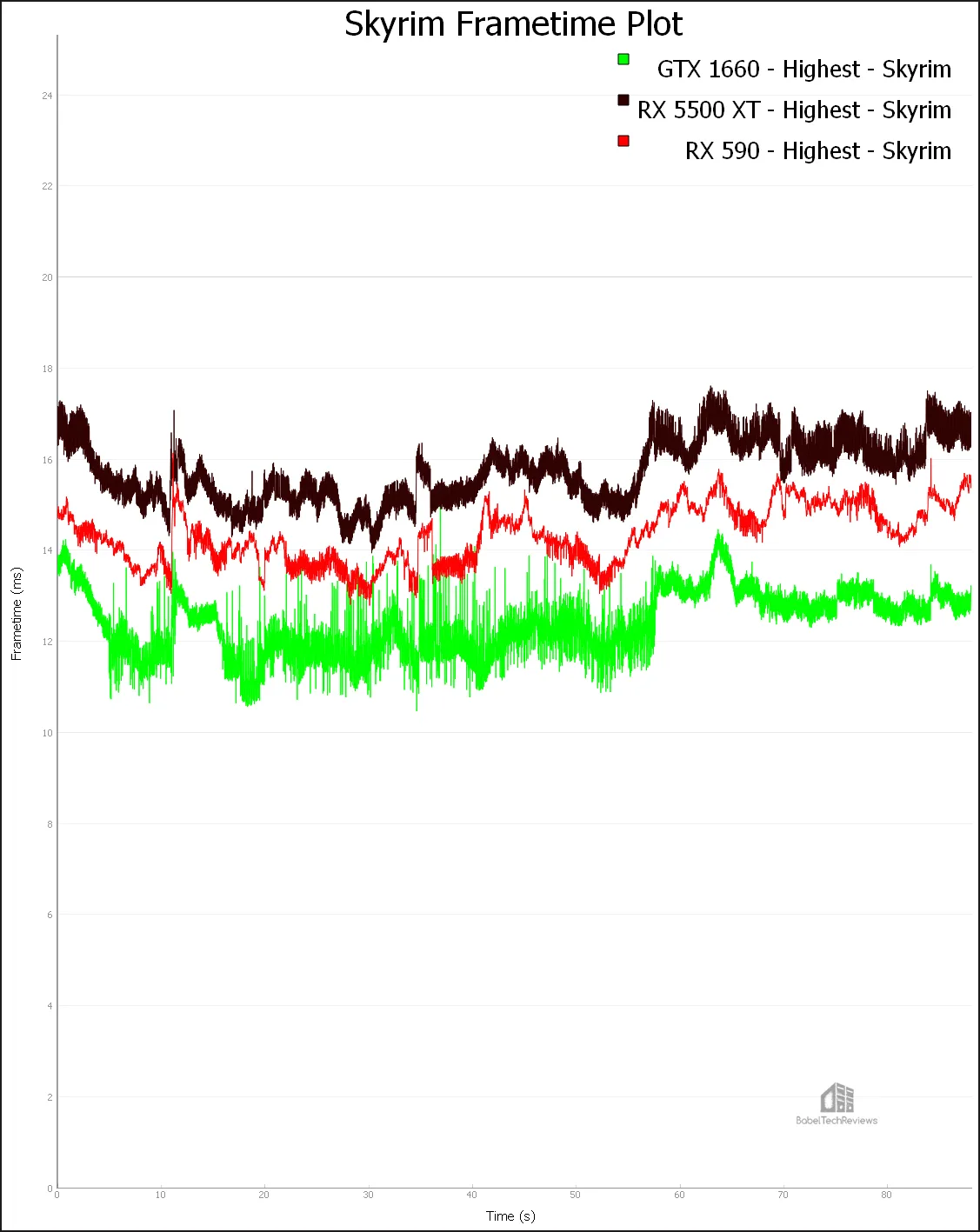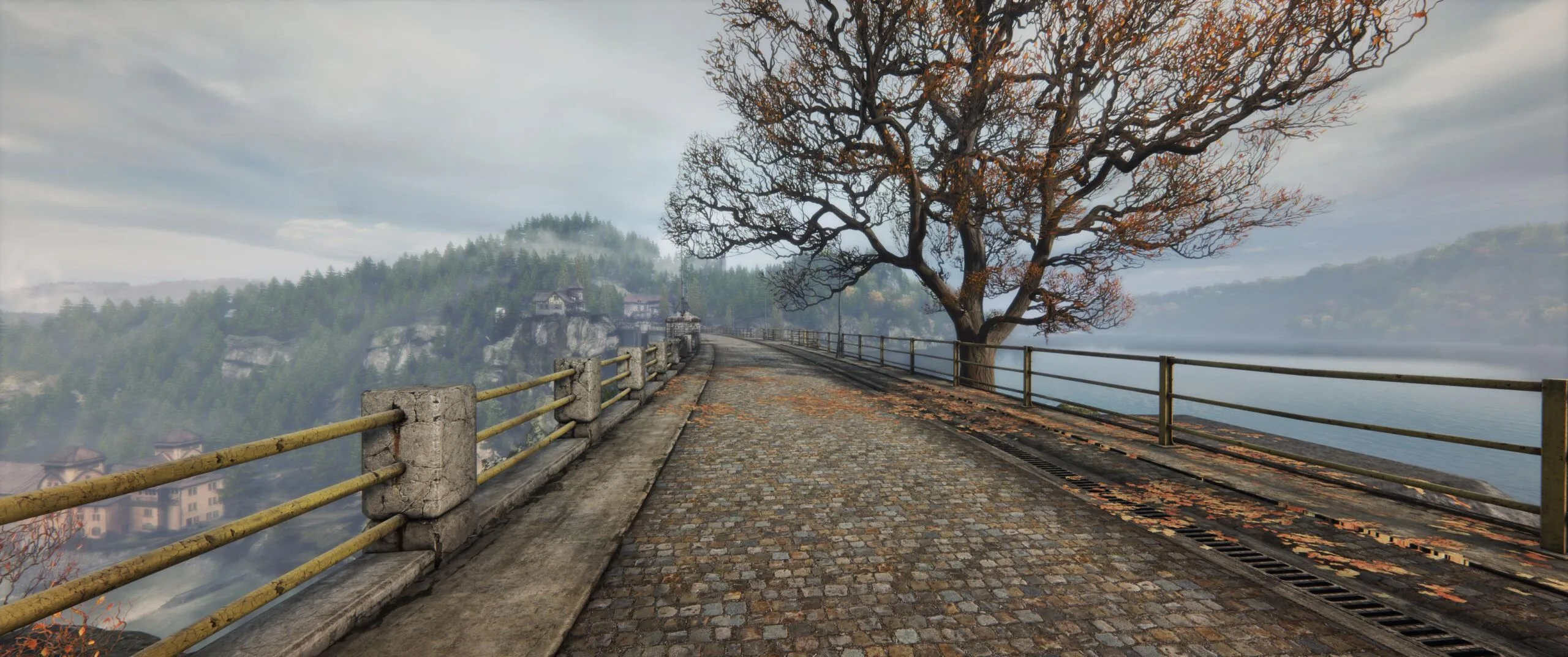Is the RX 5500 XT “VR Ready Premium” as AMD claims? – Tested vs the RX 590 & GTX 1660 using the Vive Pro
 This review follows up BTR’s Red Dragon RX 5500 XT 8GB review where we noted that AMD claims it is “VR Ready Premium”. On AMD’s website they picture a Vive Pro as a HMD capable of providing a “VR Ready Premium experience”. So we present a VR performance showdown between the RX 5500 XT 8GB, the RX 590 8GB, and versus the GTX 1660 6GB. We measure frametimes and unconstrained performance using FCAT VR with the Vive Pro to see if any of these entry-level PCVR video cards can provide a premium VR experience.
This review follows up BTR’s Red Dragon RX 5500 XT 8GB review where we noted that AMD claims it is “VR Ready Premium”. On AMD’s website they picture a Vive Pro as a HMD capable of providing a “VR Ready Premium experience”. So we present a VR performance showdown between the RX 5500 XT 8GB, the RX 590 8GB, and versus the GTX 1660 6GB. We measure frametimes and unconstrained performance using FCAT VR with the Vive Pro to see if any of these entry-level PCVR video cards can provide a premium VR experience.
The RX 5500 XT 8GB starts at $199 in the USA and the Red Dragon version we benchmark is $219. The GTX 1660 starts at $209 and our test EVGA GTX 1660 XC is $229. The RX 590 starts at $199 and the Red Devil version commands a premium price if one can be found. All of these test cards fit into the $199 to $229 range and we are interested to see how they compare using our 10-game VR benchmark suite.
Since we posted our original review three years ago, we have benchmarked many VR games for our follow-up reviews over the past thirty-six months using the Oculus Rift CV-1 but now we are using a more demanding HMD, the Vive Pro. We have also compared FCAT-VR with our own video benchmarks using a camera to capture images directly from our HMDs’ lenses. For BTR’s VR testing methodology, please refer to this evaluation.
We currently benchmark ten VR games using the Vive Pro. BTR’s testing platform is an Intel Core i7-8700K at 4.8GHz, an EVGA Z370 FTW motherboard and 16 GB of T-Force XTREEM DDR4 at 3866MHz on Windows 10 64-bit Home Edition. Here are the ten VR games that we benchmark:
- ARK: Park
- Elite Dangerous
- Fallout 4
- Hellblade: Senua’s Sacrifice
- No Man’s Sky
- Obduction
- Project CARS 2
- Skyrim
- Subnautica
- The Vanishing of Ethan Carter
It is important to be aware of VR performance since poorly delivered frames can make a VR experience very unpleasant. It is also important to understand how we accurately benchmark VR games as explained here. But before we benchmark our ten VR games, check out our Test Configuration.
Test Configuration – Hardware
- Intel Core i7-8700K (HyperThreading and Turbo boost is on to 4.8GHz for all cores; Coffee Lake DX11 CPU graphics).
- EVGA Z370 FTW motherboard (Intel Z370 chipset, latest BIOS, PCIe 3.0/3.1 specification, CrossFire/SLI 8x+8x), supplied by EVGA
- T-Force XTREEM 16GB DDR4 (2x8GB, dual channel at 3866MHz), supplied by Team Group
- Red Dragon RX 5500 XT 8GB, at Red Dragon Factory clocks, on loan from PowerColor
- Red Devil RX 590 8GB, at Red Devil factory clocks, on loan from PowerColor
- EVGA GTX 166 XC 6GB, at EVGA factory clocks, on loan from EVGA
- 480GB L5 LTE Team Group SSD
- 1.92TB San Disk enterprise class SSD
- 2TB Micron 1100 enterprise class SSD
- T-FORCE Vulcan 500GB SSD, supplied by Team Group
- EVGA 1000G 1000W Gold power supply unit
- Cooler Master 240mm CPU water cooler
- EVGA Nu Audio stereo PCIe sound card, supplied by EVGA
- Edifier R1280T active desktop speakers
- EVGA DG-77, mid-tower case supplied by EVGA
- Monoprice Crystal Pro 4K
- Vive Pro, on loan from HTC/Vive
Test Configuration – Software
- GeForce Game Ready 441.66 WHQL drivers
- Adrenalin Software Edition 19.12.3 drivers
- Unconstrained framerate results show average frame rates where higher is better; Frametime plots show frametimes where lower is better
- Highest quality sound (stereo) used in all games
- Windows 10 64-bit Home edition v1909
- Latest DirectX
- All 10 VR games are patched to their latest versions at time of publication
- FCAT-VR Capture vCL27239443
- FCAT-VR Beta 18
- SteamVR
- Viveport
10 VR Game benchmark suite & 2 synthetic tests
Synthetic
- VRMark Cyan Room
- Unigine Superposition VR Benchmark
SteamVR/Viveport*/Epic** Platform Games
- ARK: Park
- Elite Dangerous
- Fallout 4
- Hellblade: Senua’s Sacrifice
- No Man’s Sky
- Obduction*
- Project CARS 2
- Skyrim
- Subnautica**
- The Vanishing of Ethan Carter
The Unreal 4 engine is a very popular engine for VR development, and four of our ten benchmarked games are created with it. The Creation engine is used for two games, while the COBRA, No Man’s Sky, Unity, and Madness engines are each represented by one game. All of the engines are identified under each game’s description.
It is important to remember that BTR’s charts use frametimes in ms where lower is better, but we also compare “unconstrained framerates” which shows what a video card could deliver (headroom) if it wasn’t locked to either 90 FPS or to 45 FPS by the HMD. In the case of unconstrained FPS which measures one important performance metric, faster is better.
Please note that these charts only feature frametimes without interval plots because of an issue with the way FCAT-VR still incorrectly reports synthetic frames as dropped frames using the Vive Pro. All of our games were benchmarked at 100% resolution.
Let’s individually look at our ten VR games’ performance using FCAT-VR. First up, ARK Park.
ARK Park
ARK Park is a single or multiplayer VR adventure game set in a dinosaur theme park, and it allows gamers to interact with a few of the dinosaurs in ARK: Survival Evolved. The idea is to explore your own “Jurassic Park” with opportunities to study genetics, raise baby dinosaurs from eggs, ride and paint them, and even defend the park against attacking dinosaurs in a wave shooter segment. 
ARK: Park has very few adjustable settings so we benchmark using its highest preset setting.
Here are the performance results of our three competing cards using FCAT-VR’s generated chart.
The unconstrained framerate of the GTX 1660 was 101.2 FPS and the RX 1550 XT gave 55.1 FPS and the RX 590 only achieved 55.2 unconstrained FPS. We suspect that the Radeon cards have driver issues with this game.
Elite Dangerous
Elite Dangerous is a popular space sim built using the COBRA engine. It is hard to find a repeatable benchmark outside of the training missions.
A player will probably spend a lot of time piloting his space cruiser while completing a multitude of tasks. Elite Dangerous is also co-op and multiplayer with a dedicated following of players.
We picked the Medium Preset. Here are the frametimes.
The unconstrained framerate of the GTX 1660 was 81.2 FPS and the RX 1550 XT gave 68.7 FPS, while the RX 590 got 70.1 FPS
Let’s check out Fallout 4.
Fallout 4 VR
Fallout 4 uses the Creation Engine. We benchmark at its highest settings and with TAA.
Here are the frametimes for Fallout 4.
In Fallout 4, the unconstrained framerate of the GTX 1660 was 46.7 FPS and the RX 1550 XT gave 42.9 FPS, making the game an unacceptable experience on highest settings even using reprojection. The RX 590 is in a similar class with 45.8 unconstrained FPS. It was unpleasant to play Fallout 4 with a RX 5500 XT at these settings as many frames were dropped even while using reprojection and we would recommend lowering them.
Next we benchmark Hellblade: Senua’s Sacrifice.
Hellblade: Senua’s Sacrifice
Hellblade: Senua’s Sacrifice is a visually impressive game using the Unreal 4 engine. It is a dark and disturbing game that is far more intense in VR than playing the regular version. We benchmark at the Very Highest settings and with TAA even though all three of our entry level cards will use reprojected frames.
Here is the frametime plot for Hellblade: Senua’s Sacrifice on its highest settings at 100%.
The unconstrained framerate of the GTX 1660 was 59.3 FPS but the RX 1550 XT did much better with 69.4 FPS. The RX 590 managed 67.9 unconstrained frames. Hellblade: Senua’s Sacrifice is a beautiful game on its highest setting and it is generally playable with all three of our video cards at a locked 45Hz/FPS framerate using reprojection.
Next we will check out another very demanding VR game, No Man’s Sky.
No Man’s Sky
No Man’s Sky is an action-adventure survival single and multiplayer game that emphasizes survival, exploration, fighting, and trading. It is set in a procedurally generated deterministic open universe, which includes over 18 quintillion unique planets using its own custom game engine.
The player takes the role of a Traveller, in an uncharted universe by starting on a random planet with a damaged spacecraft equipped only with a jetpack-equipped exosuit and a versatile multi-tool that can also be used for defense. The player is encouraged to find resources to repair their spacecraft allowing for intra- and inter-planetary travel, and to interact with other players.
Here is the No Man’s Sky Frametime plot. We set the settings to “Enhanced” which is just above Low and we raised anisotropic filtering from 2x to 16x.
In No Man’s Sky, the unconstrained framerate of the GTX 1660 was 49.5 FPS but the RX 1550 XT only gave 42.8 FPS, making it an unacceptable experience on Enhanced settings even using reprojection. The RX 590 only managed 45.6 unconstrained FPS. which means some frames will be dropped. Again, it was unsettling to play No Man’s Sky at Enhanced settings using a RX 5500 XT and we would recommend dropping them to Low.
Next up is another demanding VR game, Obduction.
Obduction
Obduction is considered the spiritual successor to Myst and Riven. It is an adventure game developed by Cyan Worlds using the Unreal 4 engine. There is an emphasis on puzzle solving which get more and more difficult as a player progresses.
Here is Obduction’s frametime plot.
Obduction’s unconstrained framerate of the GTX 1660 was 68.7 FPS with 7 dropped frames and the RX 1550 XT gave 75.3 FPS. The RX 590 delivered 75.0 unconstrained FPS which means all three cards will work OK with reprojection.
Next we will check out another demanding VR game, Project CARS 2.
Project CARS 2
There is no way outside of the virtual reality experience to convey the incredible sense of immersion that comes from playing Project CARS 2 in VR using a wheel and pedals. It uses its in-house Madness engine and the physics implementation is outstanding.
Project CARS 2 offers many performance options and settings, and we prefer playing with our three cards using Medium settings (also using SMAA Medium) but with Motion Blur set to Low.

Here are the results of our FCAT-VR benching.
Project CARS 2’s unconstrained framerate of the GTX 1660 was 49.6 FPS and the RX 1550 XT gave 47.0 FPS. The RX 590 delivered 50.3 unconstrained FPS which means the game is marginally playable on all three cards at Medium settings using reprojection although it is certainly not ideal.
Let’s benchmark Skyrim VR.
Skyrim VR
Skyrim VR is an older game that is not as demanding as many of the newer VR ports so its performance is very good on maxed-out settings using its Creation engine. We played for over 40 hours to complete the main quest in VR with a much higher sense of immersion than playing the pancake game. Casting fireballs from ones fingertips and feeling the thunk of arrows into one’s shield is a great experience unique to Skyrim VR.
We benchmarked Skyrim VR using its highest settings.
Skyrim’s unconstrained framerate of the GTX 1660 was 86.1 FPS but the RX 1550 XT gave 65.9 FPS. The RX 590 delivered 72.8 unconstrained frames per second so all three cards can play Skyrim on highest settings with reprojection.
Subnautica
Subnautica uses a heavily modded version of the Unity engine. As the sole survivor of a crash landing, the player ventures into the depths of a visually impressive alien underwater world. Here you can explore, craft equipment and build bases, pilot underwater craft, and solve mysteries while attempting to survive a very hostile environment.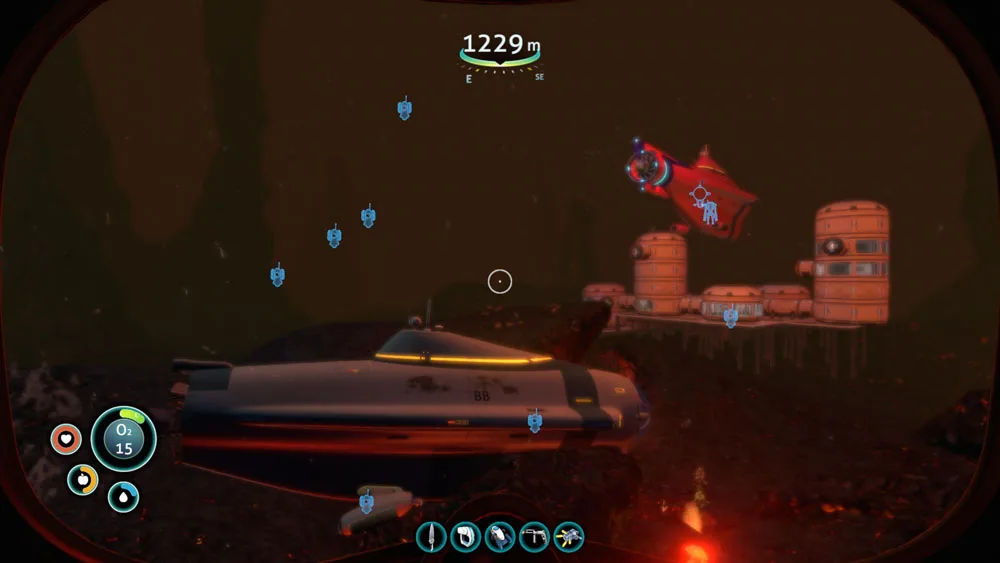
We benchmarked Subnautica using its Lowest settings. There is a lot less detail playing on low, and textures pop into view rather suddenly.
Subnautica’s unconstrained framerate of the GTX 1660 was 57.5 FPS and the RX 1550 XT gave 54.8 FPS, making the game a somewhat acceptable VR experience on Low settings using reprojection. The RX 590 managed 51.8 unconstrained FPS in third place.
Subnautica is a very demanding game even at the lowest settings. We would recommend adding Steam VR’s Motion Smoothing – or dropping the resolution multiplier – in addition to using reprojection for satisfactory play without tempting VR sickness using entry level cards with a demanding HMD such as the Vive Pro.
The Vanishing of Ethan Carter
The Vanishing of Ethan Carter is built on the Unreal 4 engine and it boasts amazing visuals even on entry-level cards. Although it is considered by some to be a walking simulator, it is also an excellent detective game with great puzzles. Be aware that its style of locomotion tends to make some of its players VR sick.
There are just a few in-game graphics options available, so we picked 100% resolution with TAA.
The Vanishing of Ethan Carter’s unconstrained framerate of the GTX 1660 was 147.7 FPS, the RX 1550 XT gave 122.2 FPS, and the RX 590 produced 131.5 FPS. No synthetic or dropped frames were reported by any of our cards and this is one game out of ten where our three cards can each deliver a “premium” VR experience.
When there is performance headroom as in this case, we recommend increasing the resolution multiplier as far as a player’s card can handle without needing to generate synthetic frames. The Vanishing of Ethan Carter is the last of our ten tested games, so let’s look at the summary charts.
Unconstrained Framerates
The following chart summarizes the overall Unconstrained Framerates of our three test games. Included are two synthetic benchmarks, Superposition (given in average and minimum FPS) and VRMark’s Cyan Room (score). An ‘X’ means the game was not run.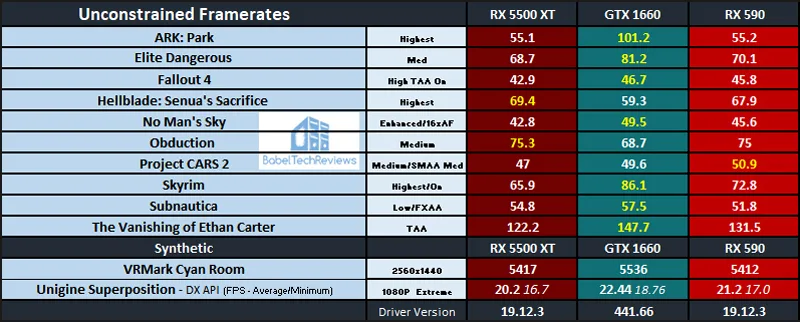
The GTX 1660 is the fastest VR card of the three tested winning seven games while the RX 1550 XT only wins two and the RX 590 only manages to win one game.
The VR Big Picture
Besides the above three cards, we also compare the GTX 1660 SUPER, the GTX 1660 Ti, the RX 5700 XT, the RTX 2060 SUPER, the RTX 2070 SUPER, the RTX 2080 SUPER and the RTX 2080 Ti on recent drivers using the Vive Pro. Please note that settings have been lowered for the first five entry level cards as noted in the smaller chart above. An ‘X’ means the game was not run at that setting. Open the chart in a separate window or tab for best viewing.
Only the RTX 2080 Ti is able to deliver at least 90 FPS/90Hz in 9 of our 10 of our tested games, and the results have been ranked in order from the weakest card (RX 5500 XT) to the strongest (RTX 2080 Ti). Let’s check out our conclusion.
Conclusion
The GTX 1660, the RX 5500 XT and the RX 590 are in approximately the same class when it comes to VR performance although the GeForce card wins seven out of ten games.
Although these three cards are sufficient for playing with a less demanding HMD like the Oculus Rift CV-1 or the original Vive, they each struggle to give sufficient performance using the Vive Pro. At best, these cards can only manage to keep two out of our ten test games at 90 FPS while the others require using reprojection to even maintain a locked 45 FPS, and in some cases they fail to maintain that cadence and drop frames. We felt uneasy benching several games and would have to drop settings even further to avoid VR sickness for extended play.
We would like to make it clear that a drop to 45Hz down from 90Hz is noticeable and that any irregularities in framerate delivery are magnified by reprojection. This reviewer would not recommend an entry-level card like the RX 5500 XT for premium VR. If someone is going to spend hundreds of dollars on a premium HMD like the Vive Pro or the Valve Index they should not cheap out on their graphics card. We conclude that the RX 5500 XT and similar performing cards do not deliver a “VR Ready Premium” experience using a premium headset.
Next up, we are reviewing a Team Group Delta Max 500GB RGB-enabled SSD before we return to VR with something very special for our readers. Stay tuned!
Happy VR gaming!
